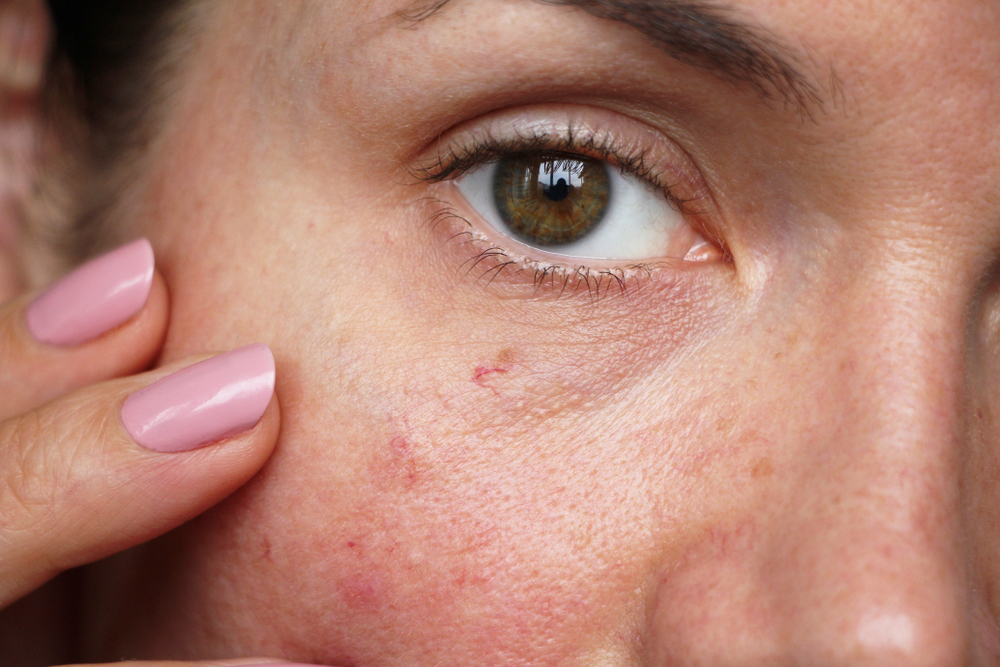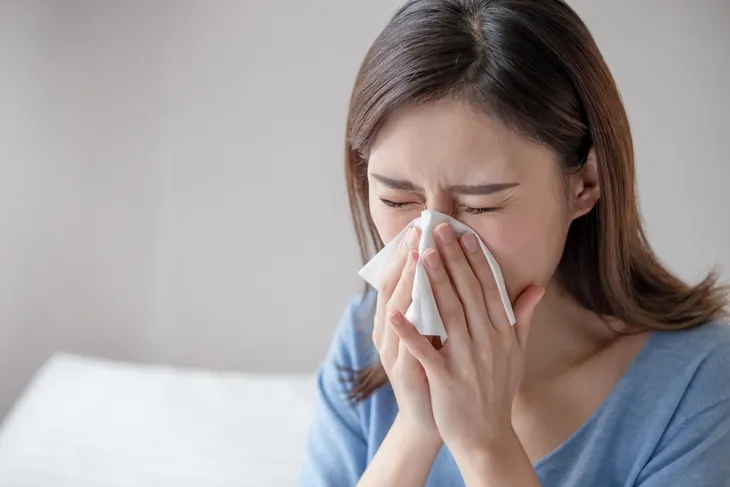- A spider vein is a broken blood vessel that can occur when the veins are dilated, or enlarged, just beneath the skin’s surface.
- Spider veins on the face can be caused for a variety of reasons, including both physical and environmental factors.
- Spider veins on the face may disappear on their own, but there are a variety of natural and medical treatments available for immediate results.
Broken blood vessels, also known as spider veins, are enlarged blood vessels that occur just beneath the skin’s surface. The result is a web-like appearance that gives them their commonly used name. While spider veins are most likely to occur on the legs, it is also common for them to appear on the face.
Luckily, other than their appearance, spider veins are relatively harmless and do not cause severe symptoms. If you’re struggling with spider veins, be rest assured that they are completely normal and more common than you might think. They’re also fairly easy to treat, and can be prevented with proper lifestyle and self-care changes. Follow along as we outline everything you should know about spider veins on the face, including causes, treatment and prevention.
What Is a Spider Vein?
A spider vein, or broken blood vessel, can occur when the veins are dilated, or enlarged, just beneath your skin’s surface, according to Healthline. The result of this occurrence is a web-shape of small, red lines that spread out. Spider veins can develop anywhere on the body, but are commonly on the legs and face. When these blood vessels are prominent near the facial surface, they are also referred to as facial Telangiectasis.
Spider veins are just below the skin’s surface, so they are often highly visible. They do not typically cause pain, but can occasionally cause mild discomfort. If your spider veins are causing you to become conscious, the good news is that they are often easily treatable and preventable, especially if you’re able to determine the underlying cause.
 Shutterstock/Geinz Angelina
Shutterstock/Geinz AngelinaSigns and Symptoms of Spider Veins
While having broken blood vessels on the face can be frustrating and a cause for concern for some, it’s important to remember that this condition is typically only a cosmetic concern. Most often, spider veins cause no harm and rarely cause severely painful symptoms, according to Medical News Today. The most notable sign and symptom of a spider vein is the appearance of a red, web-like marking on the skin. This area of skin may also be more sensitive.
If you are bothered by the spider veins, it’s important to evaluate what is causing them and take preventative measures to avoid them. There are also many treatment options available, both natural and medical, that can help to remove them altogether or significantly minimize their appearance.
 Shutterstock/popcorner
Shutterstock/popcornerWhat Causes Spider Veins on the Face?
There are a variety of causes behind spider veins on the face, and some people tend to develop them more than others. Almost anyone can develop broken blood vessels, and it can happen at any age, even during childhood. With that being said, it is more common to develop spider veins as we age since the capillaries can become dilated due to poor blood circulation and aging.
The risk of a spider vein appearing largely depends on the cause. Once you determine the root cause of the spider veins, it’s easier to diagnose, treat and prevent them going forward. Follow along as we take a deep look at some common causes and risk factors of spider veins.
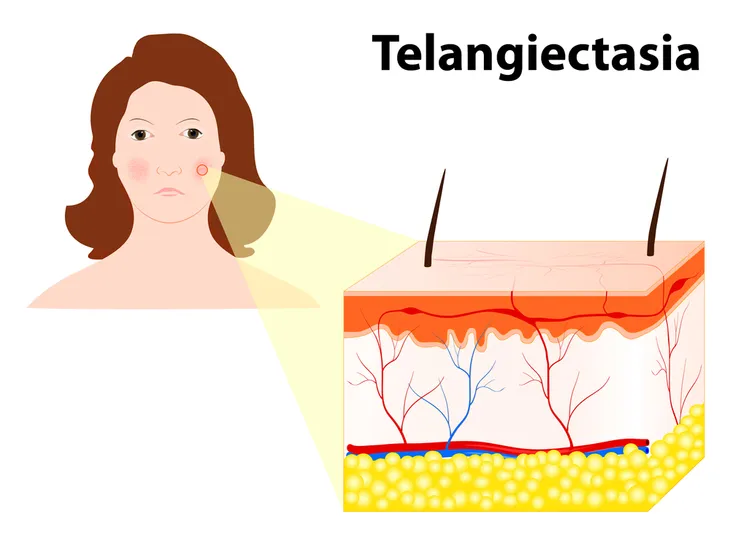 Shutterstock/Designua
Shutterstock/DesignuaRisk Factors
Some people are more predisposed to develop spider veins based on their genetics. For unknown reasons, those with family members who experience spider veins are more likely to have them as well. According to Medical News Today, up to 90-percent of cases are in people with a family history of spider veins. The source also explains that spider veins affect women “almost twice as much” as men.
Additionally, spider veins are more likely to develop with age. Healthline explains that the valves in the veins tend to get weaker over time, which can lead to spider veins. Medical News Today explains that 41-percent of women over the age of 50 have spider veins.
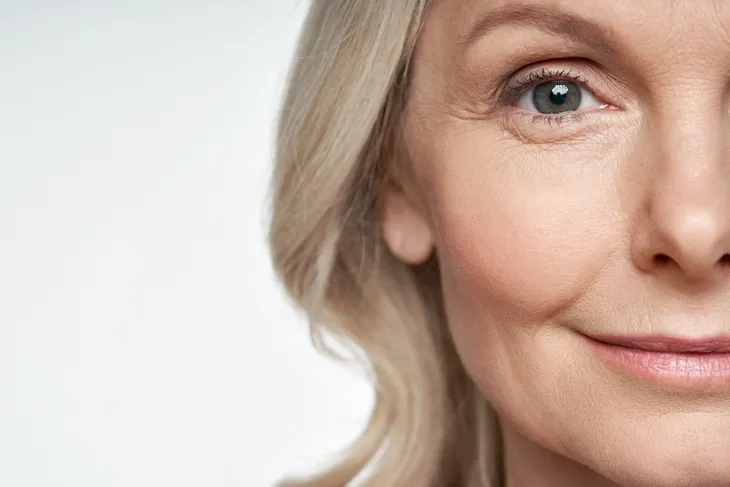 Shutterstock/sruilk
Shutterstock/sruilkSpider Vein Causes: Physical Factors
When it comes to spider veins on the face, there are a few physical factors to be aware of that could be causing them. One physical factor is that if you are someone who struggles with the skin condition rosacea, you may be more likely to develop spider veins. Healthline explains that rosacea is a common skin condition where excessive redness and flushing occurs due to enlarged veins.
Another physical factor that could be causing spider veins on the face is a change in hormones or pregnancy. Healthline explains that an increase in estrogen, which happens during pregnancy, can often lead to broken blood vessels. Spider veins can also occur during delivery as pressure increases in the face, however, these pregnancy-related spider veins can often heal on their own after delivery.
 Shutterstock/sruilk
Shutterstock/sruilkSpider Vein Causes: Environmental Factors
Another possible cause of spider veins on the face is due to environmental factors. Healthline explains that excessive sun exposure can lead to enlarged blood vessels. If you experience a sunburn, the top layer of the skin may peel, which could temporarily make the blood vessels in your face more noticeable.
Other environmental factors that could lead to spider veins are exposure to environmental pollutants that damage the skin and make blood vessels more visible. Changes in weather have also been noted as causes for spider veins on the face. Extreme heat, whether from the sun, a sauna or spa, may cause or emphasize spider veins in the face.
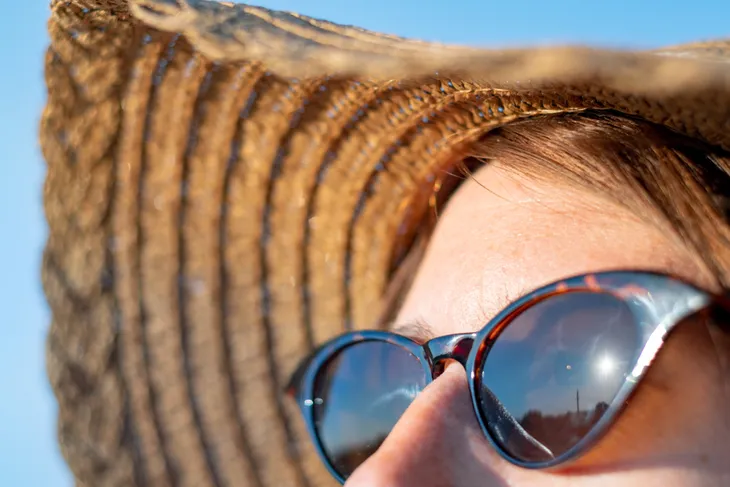 Shutterstock/Aleksey Boyko
Shutterstock/Aleksey BoykoSpider Vein Causes: Lifestyle Factors
There are a variety of lifestyle factors to be aware of that could be causing your spider veins. Moderate or occasional alcohol consumption can cause the enlargement of blood vessels which can lead to your face appearing flush. Heavy alcohol use or binge drinking can also eventually lead to spider veins.
Another possible cause of spider veins is sudden changes in pressure due to injury or illness. Injuries, whether minor or major, can lead to bruising, which can also lead to noticeable broken blood vessels in the face. Sudden changes in pressure can also lead to broken blood vessels in the face, such as when you are vomiting or sneezing, due to illness.
Diagnosing Spider Veins
Broken blood vessels, or spider veins, can often be self-identified at home. You could also seek help from a doctor for confirmation, and for guidance to point you in the right direction for a treatment plan. If you have a large amount of spider veins, your doctor may recommend a prescription medication or a care plan.
A doctor can also help to diagnose the likely cause of the spider veins, especially if they are related to an underlying health condition. Often the treatment plan for broken blood vessels is dependent on addressing the underlying condition that is causing them.
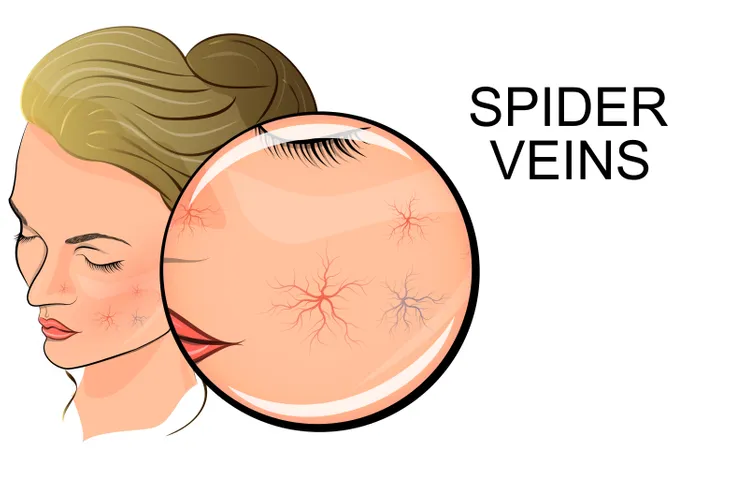 Shutterstock/Artemida-psy
Shutterstock/Artemida-psyNatural Treatment for Spider Veins
Natural remedies is often the first choice for those affected by spider veins on the face. They’re the least invasive method of treatment and are typically free of any significant risks. Medical News Today states that apple cider vinegar may reduce redness and limit the appearance of spider veins because it acts as an astringent. Horse chestnut is another natural treatment that may be worth trying. It’s an herb that is used to treat a variety of skin ailments, and the National Center for Complementary and Integrative Health explains that some people use it for vein health.
Additionally, since heat seems to be a common cause of spider veins on the face, it’s best to ensure to only wash your face with lukewarm water, or try using a cold compress after heat or sun exposure to soothe the skin and minimize spider veins.
 Shutterstock/denira
Shutterstock/deniraMedical Treatment for Spider Veins: Topical Creams
If you haven’t had much success with natural remedies, there are a variety of medical treatments available to treat spider veins. Topical creams, especially those that contain retinoids, can can help reduce the appearance of acne, rosacea and spider veins by removing the outermost layer of skin.
Laser therapy is another popular option to minimize the appearance of spider veins. Medical News Today explains that this treatment option uses laser lights to “destroy problematic veins.” It’s important to note that while this method is effective, it may make the skin sensitive during recovery and often multiple sessions are required for the desired results. Similar to laser therapy, intense pulsed light (IPL) treatment uses a similar concept, but with light that penetrates to the second layer of skin without harming the top layer.
Another treatment method to consider is sclerotherapy which uses injections to help spider veins disappear in a few weeks. According to Medical News Today, the injected substance helps to seal the blood vessels, which causes the visible blood under the skin to disappear.
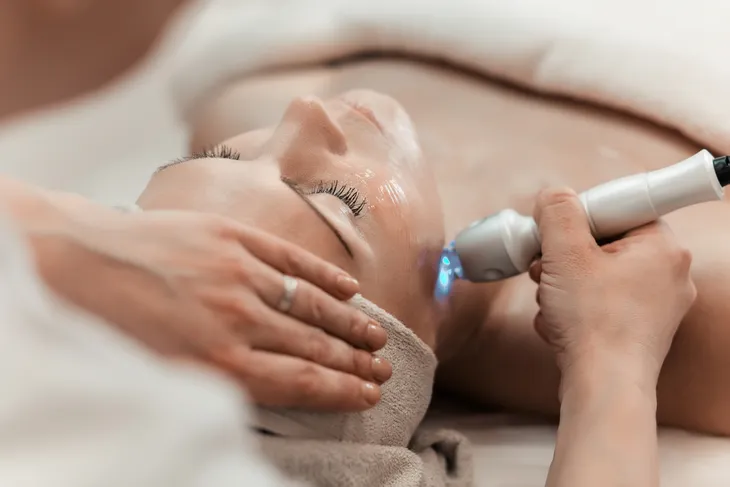 Shutterstock/Stone36
Shutterstock/Stone36Preventing Spider Veins
It’s possible to prevent spider veins by changing your lifestyle, especially if you are able to determine the cause of your spider veins. If you find that extreme heat is a trigger for your spider veins, it’s best to avoid very high temperatures from spas, saunas, or hot weather. It may also be effective to limit sun exposure by wearing sunscreen, a hat, and long layers of clothing on a daily basis.
Additionally, be sure to wear protection when engaging in risky activities that may cause injury. For example, be sure to use face gear and helmets for sports or cycling. It may also helpful to avoid vasodilators, which can trigger the vessels to fill with blood and make spider veins more prominent. Common vasodilators include alcohol, caffeine, and spicy foods.
 Shutterstock/New Africa
Shutterstock/New AfricaWhen to See a Doctor
If you notice spider veins on your face, it’s important to know that they are typically no cause for panic. If you are bothered by the appearance of your spider veins, it’s best to consult a medical professional to seek a treatment plan.
In some cases, broken blood vessels on the face may be a sign of an underlying condition. If you’re unsure of what is causing your spider veins, you should reach out to your doctor for an examination. They can help you determine what is causing the spider veins and give tips on the best way to remove them, minimize their appearance and avoid them in the future.
